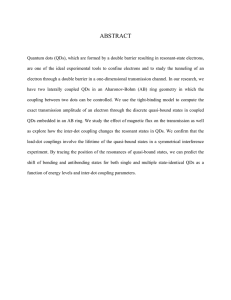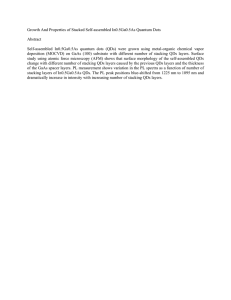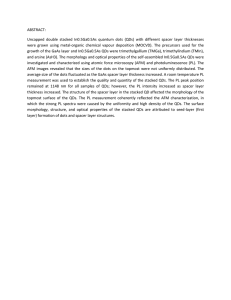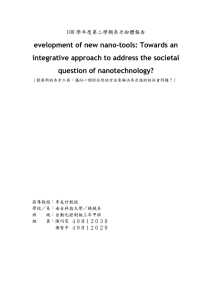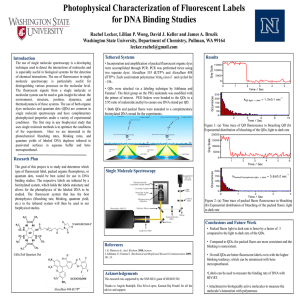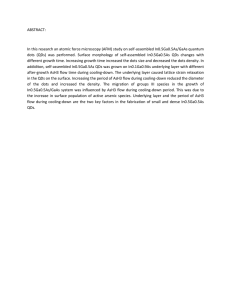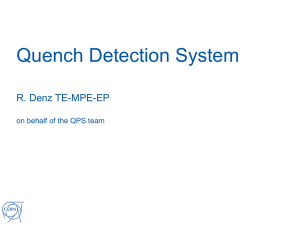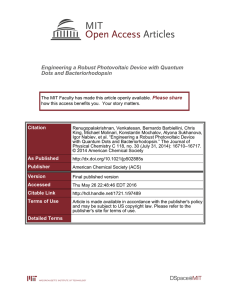Quantum-Dot Solar Cells Eray S. Aydil
advertisement
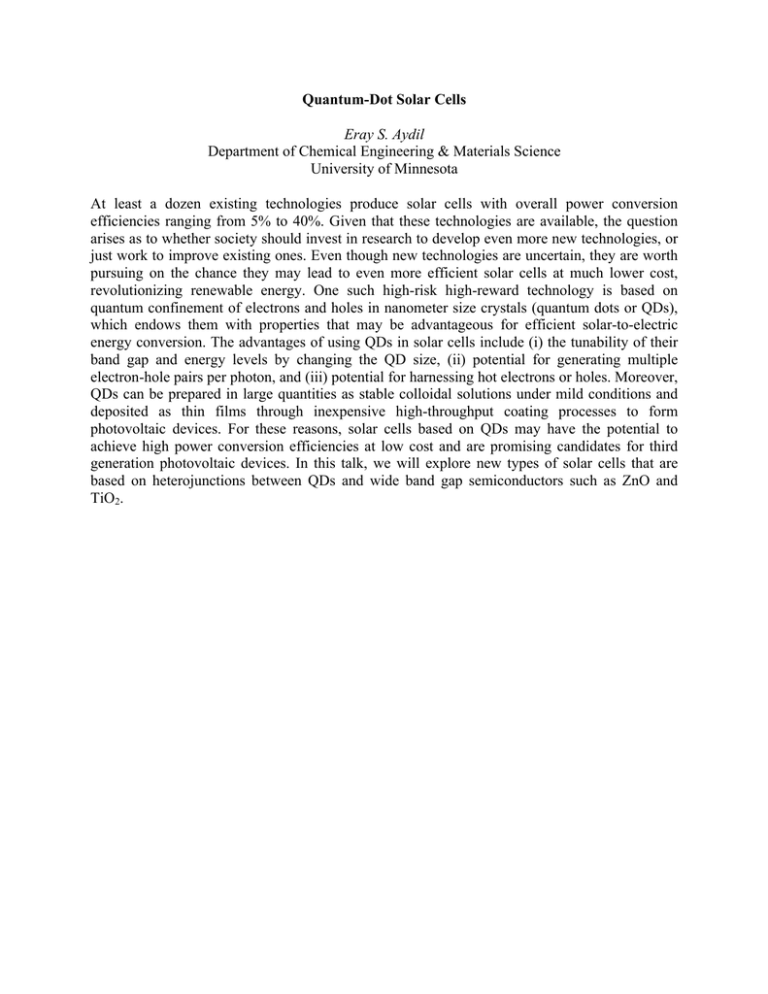
Quantum-Dot Solar Cells Eray S. Aydil Department of Chemical Engineering & Materials Science University of Minnesota At least a dozen existing technologies produce solar cells with overall power conversion efficiencies ranging from 5% to 40%. Given that these technologies are available, the question arises as to whether society should invest in research to develop even more new technologies, or just work to improve existing ones. Even though new technologies are uncertain, they are worth pursuing on the chance they may lead to even more efficient solar cells at much lower cost, revolutionizing renewable energy. One such high-risk high-reward technology is based on quantum confinement of electrons and holes in nanometer size crystals (quantum dots or QDs), which endows them with properties that may be advantageous for efficient solar-to-electric energy conversion. The advantages of using QDs in solar cells include (i) the tunability of their band gap and energy levels by changing the QD size, (ii) potential for generating multiple electron-hole pairs per photon, and (iii) potential for harnessing hot electrons or holes. Moreover, QDs can be prepared in large quantities as stable colloidal solutions under mild conditions and deposited as thin films through inexpensive high-throughput coating processes to form photovoltaic devices. For these reasons, solar cells based on QDs may have the potential to achieve high power conversion efficiencies at low cost and are promising candidates for third generation photovoltaic devices. In this talk, we will explore new types of solar cells that are based on heterojunctions between QDs and wide band gap semiconductors such as ZnO and TiO2.


